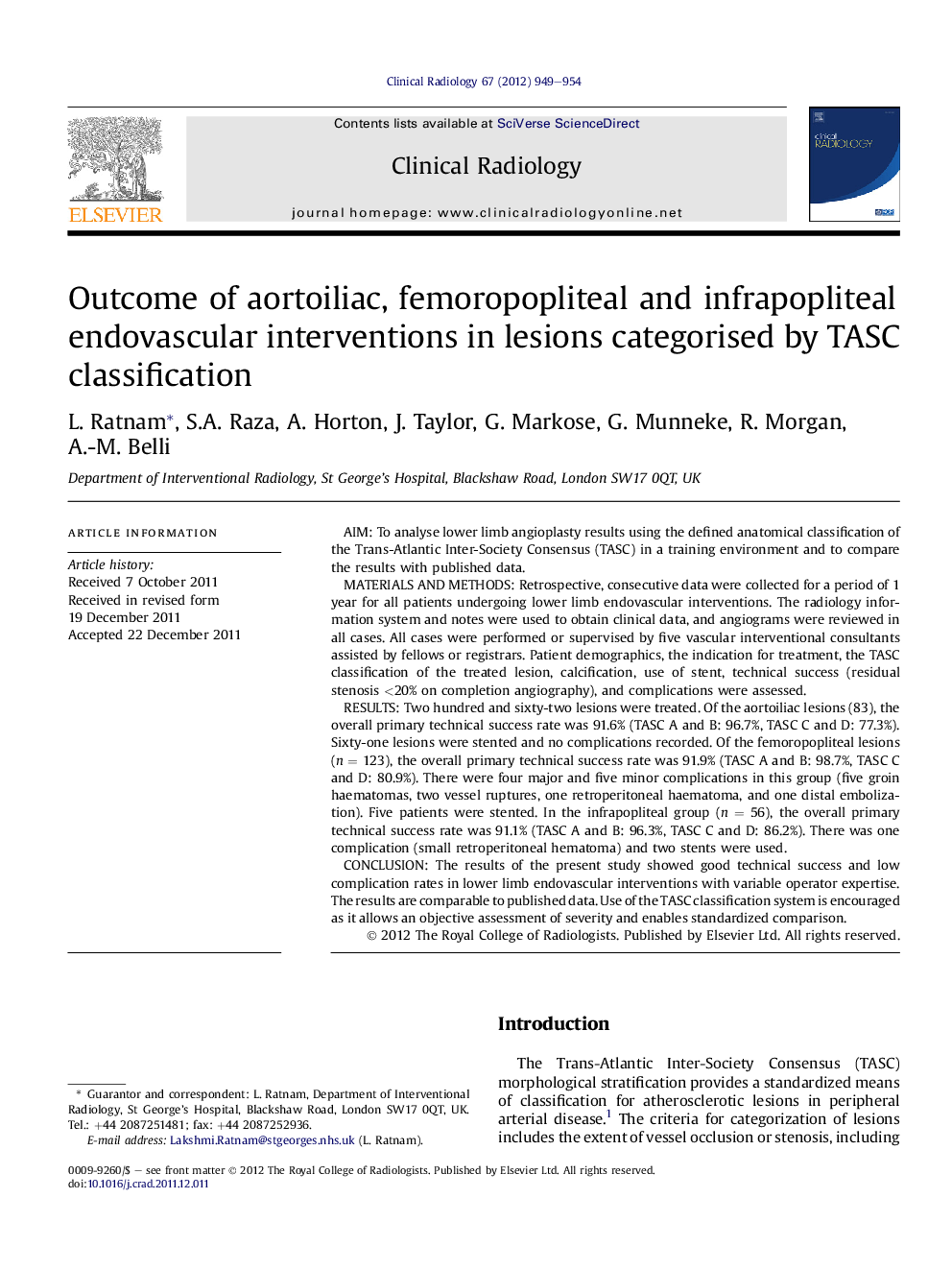| Article ID | Journal | Published Year | Pages | File Type |
|---|---|---|---|---|
| 3983007 | Clinical Radiology | 2012 | 6 Pages |
AimTo analyse lower limb angioplasty results using the defined anatomical classification of the Trans-Atlantic Inter-Society Consensus (TASC) in a training environment and to compare the results with published data.Materials and methodsRetrospective, consecutive data were collected for a period of 1 year for all patients undergoing lower limb endovascular interventions. The radiology information system and notes were used to obtain clinical data, and angiograms were reviewed in all cases. All cases were performed or supervised by five vascular interventional consultants assisted by fellows or registrars. Patient demographics, the indication for treatment, the TASC classification of the treated lesion, calcification, use of stent, technical success (residual stenosis <20% on completion angiography), and complications were assessed.ResultsTwo hundred and sixty-two lesions were treated. Of the aortoiliac lesions (83), the overall primary technical success rate was 91.6% (TASC A and B: 96.7%, TASC C and D: 77.3%). Sixty-one lesions were stented and no complications recorded. Of the femoropopliteal lesions (n = 123), the overall primary technical success rate was 91.9% (TASC A and B: 98.7%, TASC C and D: 80.9%). There were four major and five minor complications in this group (five groin haematomas, two vessel ruptures, one retroperitoneal haematoma, and one distal embolization). Five patients were stented. In the infrapopliteal group (n = 56), the overall primary technical success rate was 91.1% (TASC A and B: 96.3%, TASC C and D: 86.2%). There was one complication (small retroperitoneal hematoma) and two stents were used.ConclusionThe results of the present study showed good technical success and low complication rates in lower limb endovascular interventions with variable operator expertise. The results are comparable to published data. Use of the TASC classification system is encouraged as it allows an objective assessment of severity and enables standardized comparison.
